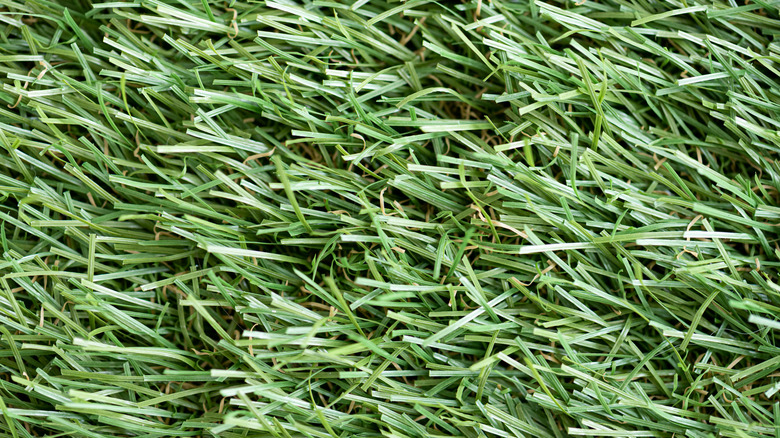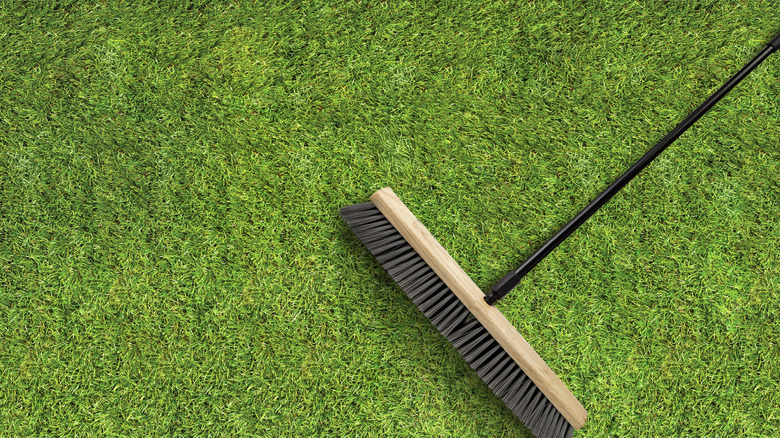How To Easily Remove Stains From Your Artificial Turf Lawn
If you want a green lawn that's easy to care for, you can't get much more low-maintenance than artificial turf. Low maintenance doesn't mean zero maintenance, but even removing stains from artificial grass is easy as long as you stick to the right products. Soap, detergent, ammonia, vinegar, or mineral spirits will do the trick for most stains.
Artificial turf is designed to look like a living lawn, but the grass blades are made of plastic. They're attached to a plastic backing and sometimes contain a rubber and sand infill. Since the lawn is artificial, it stays vividly green year-round without any watering, mowing, or weeding. It can be installed anywhere, even in shady spots where grass can't grow.
As with any product, there are some tradeoffs to installing artificial grass. It's more expensive upfront, but it can save you money long-term. It's not recyclable or biodegradable, and it doesn't support wildlife. And while you wouldn't worry about staining a living lawn, it's a possibility with an artificial one. Common causes of stains include beverages, food, condiments, paint, urine, blood, or glue. However, artificial grass is designed to be resistant to stains. In most cases, stains don't penetrate the plastic blades. Instead, residues sit on top of them, making them easy to remove.
Do's and don'ts for stain removal
To remove stains from your artificial turf, first absorb leftover liquid with a dry cloth or kitty litter, or scrape off solid residues with a spatula or plastic knife. For mild stains, spray the area with water and scrub with a mild soap. If your grass is made of polypropylene or polyethylene, any mild soap should do the trick. For nylon grass, stick to a granular or low-sudsing detergent, diluted at a ratio of 1 teaspoon of detergent to 1 pint of water. Rinse and dry.
In some cases, stronger cleaners such as ammonia (diluted with water) may be needed. Vinegar can help loosen sticky stains, while mineral spirits can remove cooking oil, motor oil, nail polish, and similar substances. Mineral spirits are flammable, so exercise caution. Use sparingly, applying to a cloth or towel and dabbing onto the stain.
Don't attempt to pressure wash your artificial grass, as it can weaken the blades and damage the infill. Don't use wire brushes or metal knives to dislodge residues, as this can damage the grass fibers. Vacuums are also not ideal since they can damage the connection between the grass and the ground.
In addition to removing stains, you can keep your artificial lawn looking fresh by regularly raking it or sweeping it with a stiff broom. Not only does this help remove sticks and leaves, but it also keeps the grass blades upright and neat-looking. Spray the entire lawn with a garden hose regularly to lift dust and dirt.

